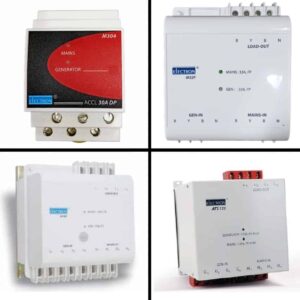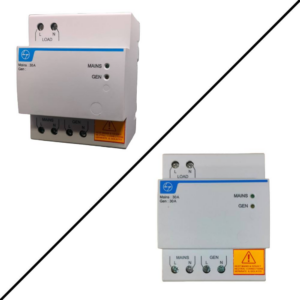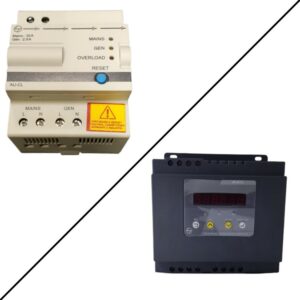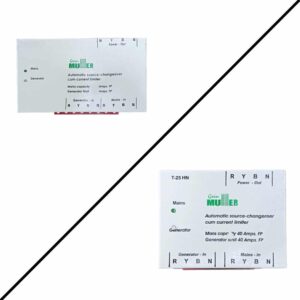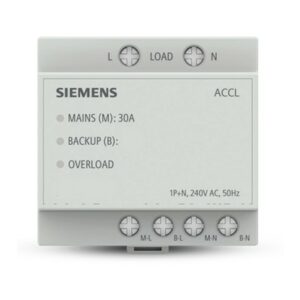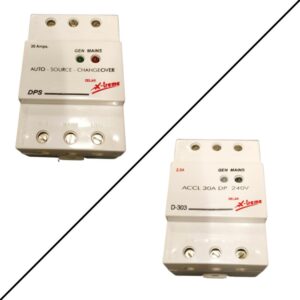Why Buy Automatic Changeover Switch?
Have you always faced trouble when your electricity goes away and you have to walk all the way to your generator to switch lines?!
Well, that is because you do not know about/have an automatic changeover switch!
What is it?
Automatic changeover switch as the name suggests shifts from the main supply to the generator load automatically and the generator is automatically started (if it was on standby mode) and comes into action. It also makes sure that as soon as your electricity comes back, the load is shifted from your generator to the main supply.
It does not just transfer the load to the backup generator, but an ATS may also command the backup generator to start (provided the generator was initially in a standby mode). This depends on the voltage monitored on the primary supply. The transfer switch is responsible for isolating the backup generator from the electric utility when the generator is on and providing temporary power.
The changeover switch will transfer the house back to utility power when utility power returns for a minimum time. While doing so, it will command the generator to turn off, after another specified amount of “cool down” time with minimal to no load on the generator.
How does it Work?
The completely automatic changeover switch has the job of monitoring incoming voltage from the utility line, around the clock.
When this utility power is interrupted in terms of electricity shortage, the automatic changeover switch immediately senses the problem and signals/commands the standby generator to send electricity.
Once the command is accepted and the generator is running at a proper speed, the automatic changeover switch then safely switches the utility line and to the generator power line from the generator.
Within a fraction of seconds, your generator system begins supplying electricity to the critical emergency circuits (specified in advance) of your home or business. The transfer switch continues to monitor the utility line conditions.
Now, after the restoration of utility line voltage, the automatic transfer switch senses that voltage has returned at a steady state, and it re-transfers the electrical load back to the utility line and resumes monitoring for subsequent utility loss. The generator now will run for an engine cool-down period of several minutes.
Why Install It?
Saves you from the hassle of repeated manual changing of lines every time the power goes off. Handling a manual generator hookup can be disastrous—especially in the dark! A changeover witch handles all of your needs all on its own, removing the dangers associated with an outage entirely.
A Properly Installed Transfer Switch Protects Your Home or Business. Improper connections mean electrical current from the generator can short circuit with utility line current when power is restored.
In businesses, where everyone is busy with growing their market, nobody wants an extra job of going and has to change the power line from the main supply to the generator supply every time the power goes off. If for any reason at all you lose access to power, your business stops dead in its tracks. And while a generator can mitigate this a bit, without a transfer switch you have to manually connect your generator to the operations you wish to restore. This chore not only eats up loads of time, resulting in downtime, it also limits the function of your generator.
Types of Automatic Changeover Switches
Open Transition
Also called a break-before-make transfer switch, an open transition switch breaks contact with one source of power before it makes contact with another. This prevents an emergency generator back into the utility line.
Closed Transition [CTTS]
It is also called a make-before-break changeover switch.
For loads that are affected by even the slightest loss of power or operational conditions where it may be desirable to transfer loads with zero interruption of power( when conditions permit), closed transition transfer switches or break-before-make transfer switches can be provided. The switch will operate in a make-before-break mode provided both sources are acceptable and synchronized.
Note: With closed transition transfer, the on-site engine generator set is momentarily connected in parallel with the utility source. This means you need to get approval from the local utility company.
Soft Loading
SLTS, short for soft-loading transfer switch makes use of CTTS. It is commonly used to synchronize and operate onsite generation that runs parallel with utility power, and the transfer of loads between the two sources. All this, while minimizing voltage or frequency transients.
A Static Transfer Switch (STS)
The transfer of load in the case of a static transfer switch is done by power semiconductors such as Silicon-controlled rectifiers (SCRs). Because of the lack of mechanical moving parts, the transfer can be completed rapidly, perhaps within a quarter-cycle of the power frequency.
_____________________________________________________________
Brands from Which You can Buy
Electron, ABB, Roshan, Havells are some common big brands that deal in this category.
 (+91) 7439 448 917
(+91) 7439 448 917 Cash on Delivery Available
Cash on Delivery Available



 Circuit Breakers
Circuit Breakers Power Distribution
Power Distribution Modular Switchboard
Modular Switchboard Wires & Cables
Wires & Cables
















